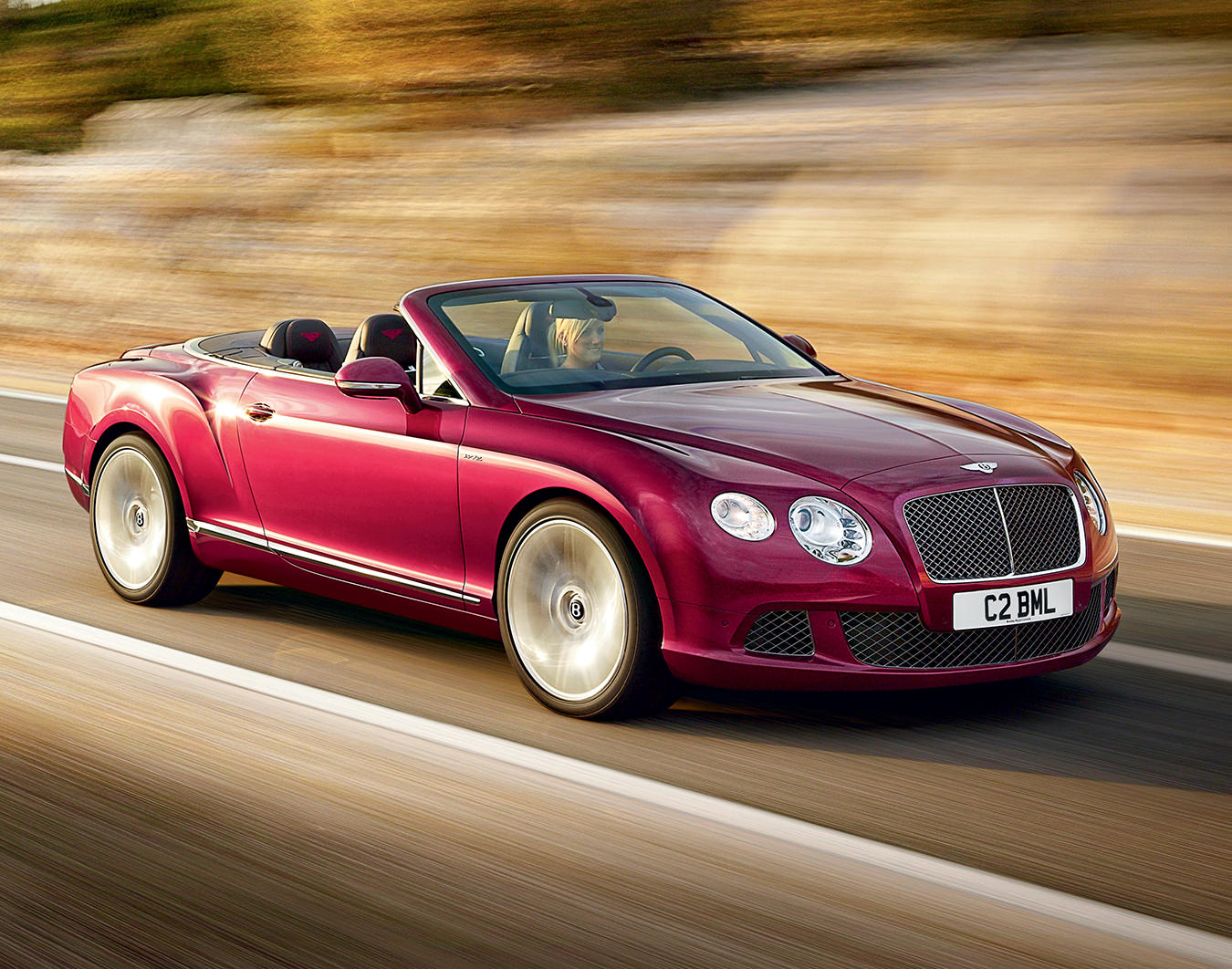W.O. Bentley, with a need for speed exceeded only by a need for power, was an engineer of great prowess. He built the Bentley Rotary I engine for the Royal Airforce Sopwith Camel airplanes, and these were instrumental in British dominance in the skies of the First World War. Post-war, Mr. Bentley began developing an automobile that would embody all of his passions, and by 1919 he had succeeded. The first-ever 24 hours of Le Mans race, in 1923, saw his car finish fourth, and he actually won the following year. Fast and furious invention and innovation followed, including the launch of the iconic winged badge.
The Depression era brought Rolls-Royce into the equation; they purchased Bentley, and moved production to what is still its production facility, at Crewe, England. Over time, the brand struggled to maintain its DNA, but, remarkably, as late as 1982 with the overwhelming success of the Mulsanne, things seemed to return to the early glory days. A takeover by Volkswagen Group in the late ’90s meant enough secure investment to keep building on the Mulsanne’s success, to the point where, today, Bentley has really never been more successful, and firmly placed in the luxury automobile firmament.
Christophe Georges is president and CEO of Bentley Motors, Inc., the Americas region, and what he does not know about Bentley’s pedigree is hardly worth knowing. The growth of the brand is exceeding the growth of the luxury market overall, which is saying something, and his take on it is that “it is a luxury brand with insouciance”. Technology and craftsmanship, both elements that W.O. Bentley advocated and practiced, are the hallmarks still for the brand. Says Georges, “There is no compromise with this car. It is the best of both worlds, advanced technology and artisanal craftsmanship”.
In a world where grasping for superlatives becomes a potential race to the bottom, Bentley can be described as a connoisseur’s car, absent of ostentation, or as Georges puts it, soliciting “admiration, not envy”. That may seem like a subtle distinction, but the truth is the demographic of Bentley ownership globally is trending much younger than in the past, and encompassing the new breed of successful entrepreneurs who are coming into serious money relatively early in their careers. So the benchmark of quality has become an attractive aspect of a brand that has 1,000 engineers in its employ and 90-plus people in the design department.
New and prospective owners are encouraged to visit Crewe, go through the production process, and customize their vehicle. It is part of what Georges calls “our genes. History is very important to us; we understand our history, and then define new trends ourselves, to stay ahead. It is interpreting the times we live in and not ever standing still”. From W.O. Bentley, through Rolls Royce (some eras leaner than others, to be sure), and on through the firm re-invigoration with Volkswagen, there has always been a persistent attention to the craft of auto-making, a pursuit of the highest possible standards, and allowing those standards to move higher with each passing decade.
Design changes, flourishes, really, are often based on the necessities of evolving rules, regulations, and laws pertaining to fuel efficiency among other factors. Bentley runs many production clinics, at which new features, new technologies, and marketing analysis all come into play, determining the path forward for the company. One of the results of these clinics is the “test” model EXP 9F, Bentley’s first SUV. Georges describes this ongoing effort to stay ahead of the current trends as a way in which “synergy amongst the overall company is created and sustained”. He pauses, looks at the four automobiles sitting gracefully in the Dilawri Automotive Group showroom in Vancouver, and says, “All of these efforts, and the history of the company from its very earliest days, this is what makes a Bentley a Bentley”.










